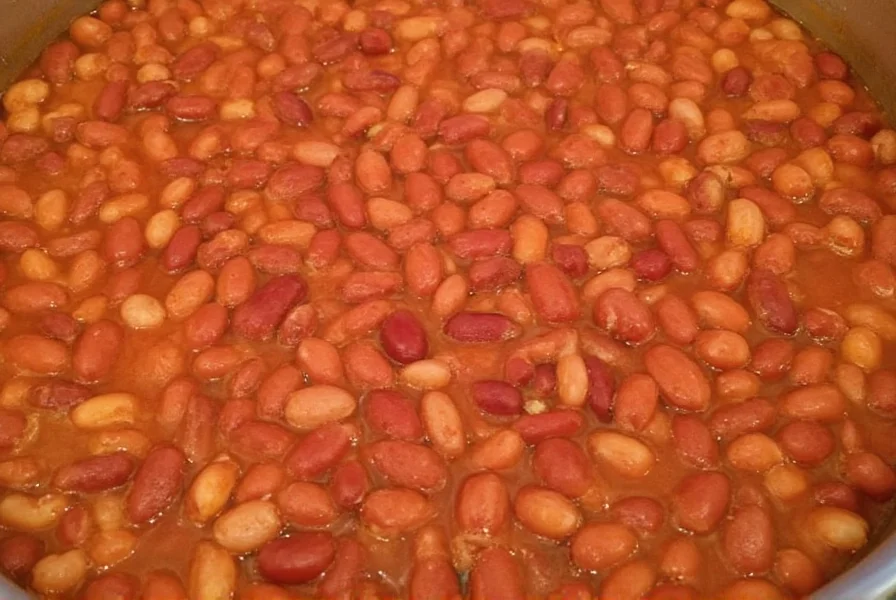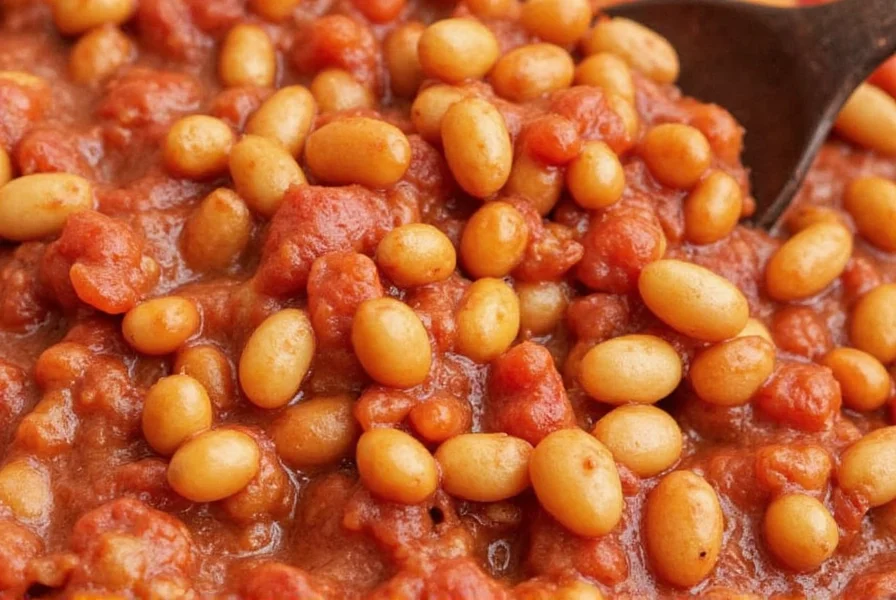Freezing chili with beans is not only possible but also an excellent way to preserve leftovers or batch-cooked meals. Beans maintain their structure well during freezing when handled correctly, making bean-based chili ideal for long-term storage. This comprehensive guide covers everything you need to know about freezing chili with beans properly, including preparation techniques, storage duration, and reheating methods that maintain optimal texture and flavor.
The Science Behind Freezing Bean Chili
Beans contain significant moisture that can form ice crystals during freezing. When frozen properly, these crystals remain small enough not to damage the bean's cellular structure. The key to successful freezing lies in rapid cooling and airtight packaging to prevent freezer burn and texture degradation. Understanding how to freeze chili with beans properly ensures your meal retains its quality when you're ready to enjoy it months later.
Step-by-Step Freezing Process
Follow these professional food preservation techniques for best results when freezing homemade bean chili:
- Cool completely - Allow chili to cool to room temperature (within 2 hours of cooking) before freezing. Never put hot chili directly in the freezer.
- Portion wisely - Divide into meal-sized portions using freezer-safe containers or heavy-duty freezer bags.
- Remove air - For bags, squeeze out excess air before sealing. For containers, leave ½ inch headspace for expansion.
- Label clearly - Include date and contents. Pro tip: Note the type of beans used as different varieties behave slightly differently when frozen.
- Freeze flat - Lay bags flat initially to freeze, then stack vertically to save space once solid.
Best Containers for Freezing Chili with Beans
The container you choose significantly impacts how well your chili maintains quality. Consider these options for best containers for freezing chili with beans:
| Container Type | Best For | Storage Duration | Notes |
|---|---|---|---|
| Freezer bags (double-layered) | Most chili types | 4-6 months | Space-efficient, easy portioning |
| Rigid plastic containers | Chili with large bean pieces | 3-4 months | Prevents crushing delicate beans |
| Glass jars (wide-mouth) | Low-acid chili recipes | 2-3 months | Leave 1-inch headspace, avoid sudden temperature changes |
| Silicone freezer trays | Single-serving portions | 2-3 months | Great for quick reheating of small amounts |
How Long Can You Freeze Chili with Beans?
While frozen foods technically remain safe indefinitely at 0°F (-18°C), quality diminishes over time. For how long can you freeze chili with beans while maintaining good quality:
- Optimal quality: 2-3 months
- Good quality: 4-6 months
- Acceptable but declining quality: 6-8 months
After 6 months, you may notice texture changes in the beans and slight flavor degradation, though the chili remains safe to eat if properly stored. The presence of tomatoes or other acidic ingredients can shorten optimal storage time slightly.
Thawing and Reheating Methods
How you thaw and reheat frozen chili significantly affects the final texture of the beans. Follow these methods for thawing frozen chili with beans safely:
Safe Thawing Options
- Refrigerator method: Transfer to refrigerator 24-48 hours before use (best for texture preservation)
- Cold water method: Submerge sealed bag in cold water, changing water every 30 minutes
- Direct reheating: Add frozen chili directly to pot with small amount of liquid
Reheating for Best Bean Texture
To prevent beans from becoming mushy when reheating frozen chili with beans without losing texture:
- Add ¼-½ cup liquid (broth, water, or tomato juice) per quart of chili
- Reheat gently over medium-low heat, stirring occasionally
- Avoid rapid boiling which breaks down bean structure
- Simmer for 10-15 minutes after fully heated through

Common Freezing Mistakes to Avoid
Avoid these pitfalls when freezing homemade bean chili storage tips to maintain quality:
- Freezing while hot: Causes condensation and ice crystals that damage bean texture
- Using regular storage bags: Not designed for freezer use and prone to tearing
- Insufficient labeling: Without dates, you won't know storage duration
- Overfilling containers: No room for expansion causes container breakage
- Repeated freezing/thawing: Each cycle degrades bean quality significantly
Does Freezing Affect Beans in Chili?
Many home cooks wonder does freezing affect beans in chili. The answer depends on bean variety and freezing technique:
- Heartier beans (kidney, black, pinto) maintain structure well when frozen properly
- Delicate beans (navy, cannellini) may become slightly softer but remain edible
- Bean integrity is best preserved with rapid freezing and minimal temperature fluctuations
- Flavor absorption often improves as spices continue to meld during frozen storage
Adding a small amount of acid (like vinegar or lime juice) after reheating can help restore brightness to flavors that may have mellowed during freezing.
Freezer Organization Tips
Maximize your freezer space while keeping track of your freezing homemade bean chili storage tips:
- Store portions vertically like books once frozen solid
- Use a dedicated freezer inventory list on your freezer door
- Rotate stock using FIFO (First In, First Out) method
- Consider vacuum sealing for longest possible storage
- Group similar items together for quick identification
Frequently Asked Questions
Can you freeze chili with beans and rice together?
Yes, you can freeze chili with beans and rice, but note that rice tends to become mushier than beans when frozen and reheated. For best texture, consider freezing the chili without rice and adding freshly cooked rice when serving.
Why do my beans get mushy after freezing chili?
Beans become mushy when frozen chili is cooled too slowly, stored too long, or reheated too aggressively. To prevent this, cool chili rapidly before freezing, store for no more than 6 months, and reheat gently with added liquid to maintain bean integrity.
Can you freeze chili with beans multiple times?
It's not recommended to freeze chili with beans multiple times. Each freeze-thaw cycle damages the cellular structure of the beans, leading to significant texture degradation and potential food safety concerns. Freeze in single-serving portions to avoid the need for refreezing.
How do you prevent freezer burn on frozen chili with beans?
Prevent freezer burn by using airtight, freezer-safe containers with minimal air space. Double-bagging, vacuum sealing, or covering the chili surface with plastic wrap before sealing containers creates an additional moisture barrier that protects against freezer burn.
Does freezing chili with beans affect the nutritional value?
Freezing preserves most nutrients in chili with beans. While some water-soluble vitamins may degrade slightly over extended storage, the protein, fiber, and mineral content remains largely unchanged. Properly frozen chili maintains nutritional value comparable to fresh preparation for several months.











 浙公网安备
33010002000092号
浙公网安备
33010002000092号 浙B2-20120091-4
浙B2-20120091-4